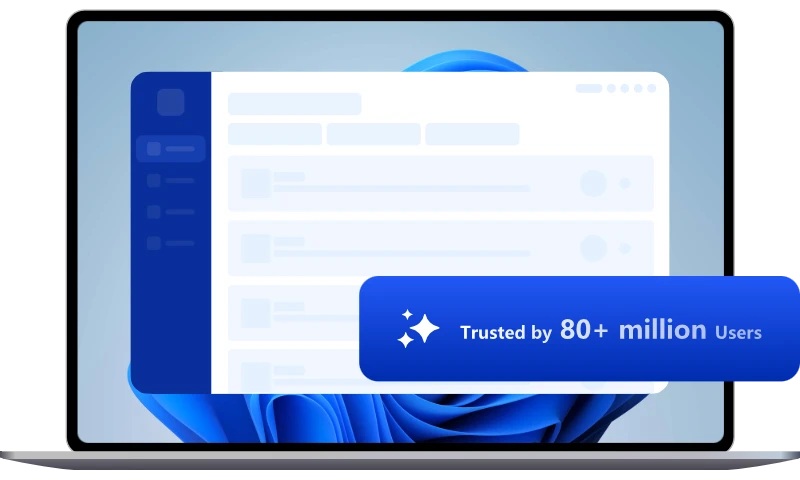3 Methods to Download and Install Windows 11
Windows 11 has entered a smooth development phase and the initially promised features are starting to fall into place. Now, it's an opportune time to install Windows 11. But what options do we have?
Now is a good time to install or upgrade to Windows 11
Windows 11 has been polished and enhanced for several months, and received its biggest update to date in February 2022. Now, this new system has entered a smooth development phase and the initially promised features are starting to fall into place (e.g. Windows Subsystem for Android).
Although Microsoft has announced that the support for Windows 10 will continue until October 2025 and has stated that it will not force users to upgrade to Windows 11, they did issue an EOS warning to users of some older versions of Windows 10. Windows 10 20H2 (or the October 2020 Update as it is called) is coming to an end of service on May 10 this year, which includes Windows 10 Professional Workstation Edition, Professional Education Edition, Professional Edition and Home Edition.
Putting all this together, now is an opportune time for many users to install Windows 11. But what are the current methods of downloading and installing Windows 11?
System requirements for installing Windows 11
Regardless of the method of installation, your device needs to meet some minimum requirements, otherwise the installation cannot be completed properly. Even though there are means to bypass requirements such as TPM and Secure Boot, Microsoft does not recommend doing so and is adding reminders to allow users to install on computers that meet the requirements. You can start by testing your device with Microsoft's PC Health Check tool.
- CPU: 1 gigahertz (GHz) or faster with two or more cores on a compatible 64-bit processor or system on a chip (SoC). For Intel, it requires eighth-generation core and above (certain high-end seventh-generation cores are also supported); For AMD, it requires Ryzen 2 and for Qualcomm, it requires Snapdragon 7c and above.
- Memory: 4gigabytes (GB) or greater.
- Storage: 64GB and greater available storage is required to install Windows 11.
- System firmware: UEFI, Secure Boot capable.
- TPM: Trusted Platform Module (TPM) version 2.0.
- Graphic card: Compatible with DirectX 12 or later, with a WDDM 2.0 driver.
- Display: High definition (720p) display, 9" or greater monitor, 8 bits per color channel.
- Internet connectivity/MSA: Internet connectivity is necessary to perform updates, and to download and use some features. In addition, Microsoft Account is required to use certain features. In addition, a Microsoft Account is required to use certain features.
1. Install Windows 11 via Windows Update
Most users with compatible devices should receive a push to upgrade Windows 11.
Go to Start > Settings > Windows Update. Then, select Check for updates and it will automatically show you if your device is capable of updating to Windows 11.
Then, simply click the Download and install button to begin the download process.
If you don't see this notification, or if the update doesn't work, you can also install it manually by following these methods.
2. Download and use Windows 11 Installation Assistant
If you wish to install Windows 11 on your computer, the installation assistant is the official and most recommended way. However, your device needs to meet the Windows 11 system requirements and have Windows 10 version 2004 or higher versions installed. At least 9 GB of free disk space is also necessary to download Windows 11.
Note: Windows 11 Installation Assistant does not work on ARM-based computers. It is only supported on computers with x64 processors.
Click here to download and launch Windows 11 Assistant. Windows will confirm that you are running the correct hardware and display the license terms.
After accepting the terms your PC will reboot and the installation process will start automatically. During this process, make sure your device is connected to a power source and do not turn it off during the update process.
3. Create a bootable USB or DVD to install Windows 11
If you want to perform a reinstall or clean install of Windows 11 on a new or used PC, you can download the media creation tool from Microsoft website to make a bootable USB or DVD. This method also requires some pre-requisites to be met, such as having a blank USB or DVD of at least 8GB, and a device that meets the system requirements of Windows 11.
You can download the Media Creation Tool directly from the Microsoft website and then launch the tool, select the language and version, and the type of media you want to create. You can also save the ISO file directly to a folder.
Creating a bootable media is not only recommended for fresh installations of Windows 11, but also for reinstalling the system if something goes wrong.
All of the above methods require your computer to meet the system requirements given by Microsoft. If you do want to try a new system and have no intention of replacing your device for the time being, then you can also try some tricks to install Windows 11 without TPM and Secure Boot.

